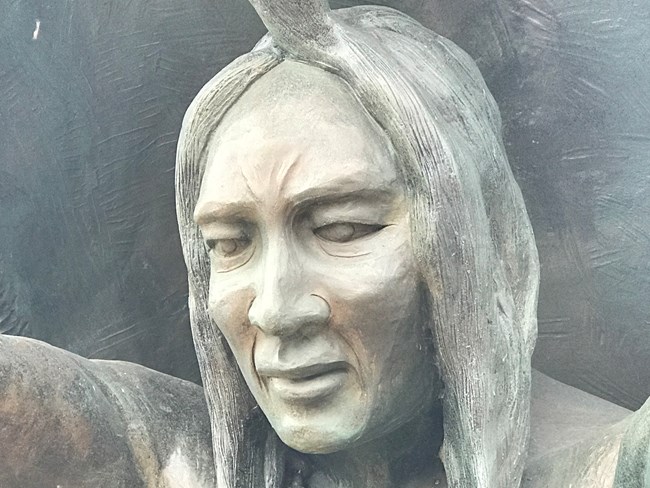Last updated: November 8, 2021
Article
Timeline of Native American Cultures

© Arrye Rosser
Indigenous peoples have lived in Northeast Ohio for 13,000 years. We don’t know what prehistoric people called themselves because their histories were not written down. How did these early people live? Archeologists look for answers. They dig through layers of earth, carefully studying things left behind by past people. Stone tools, pieces of pottery, stored seeds, and discarded animal bones are clues to what ancient people ate. Burnt stones and the remains of wooden posts hint at homelife. Some objects reflect spiritual beliefs.
Archeologists divide prehistory into different periods based on differences in these artifacts. It is possible—likely—that the same prehistoric people lived here across time periods. One lineage of people may appear different from their ancestors as they adapt their lifestyles to new ideas and changing conditions. Or one group may have displaced another over time.
There is a gap of about a century when no one lived in Cuyahoga Valley. Did the native people die from disease or warfare? Did they move away?
Once Europeans arrived, their maps and journals mention native people—refugees from conflicts to the east. In the early years of the US, the federal government removed the remaining Native American tribes by force. In the mid-1900s, there was a federal program to relocate Native Americans from western reservations to greater Cleveland. Our current native community is a mixture of people from different tribal nations.
Currently, this timeline only covers the prehistoric periods. We plan to add the historical and the modern periods in the future. Explore the text links for more details about each topic.
The habitat of this period was a spruce parkland. The evergreen trees and sedge wetlands did not provide the people with much to eat.
They lived in small groups and traveled light, following the big game they hunted.
Their homes were movable structures, probably made out of sticks and animal skins.
Paleoindians hunted caribou and other large animals using flint-tipped spears.
Archeologists have found Paleoindian stone spear points in Cuyahoga Valley.
Archaic people stayed in their seasonal base camps longer and lived in larger groups.
They used atlatls (spear-throwers) to hunt, stone axes to make canoes, and nets and bone hooks to fish.
Nuts, berries, and seeds became an important part of their diet. Later in the period, they domesticated plants such as squash.
Archeologists discovered hundreds of small Archaic sites in Cuyahoga Valley. Fireplace stones show that these people built more permanent cooking fires.
The Woodland people are best known for building complex earthworks for ceremonies and as burial sites. Some of the most famous ones are in southern Ohio. In Cuyahoga Valley these include unique hilltop enclosures that overlook the river.
It became more common to bury the dead in cemeteries. Some cemeteries were built as large mounds.
Agriculture and making pottery became increasingly important. This provided a more reliable food supply. Crops included sunflower, goosefoot, and squash.
Settlements got larger, homes became larger and sturdier, and people stayed longer during each year.
Archeologist have found shell from the Gulf of Mexico, mica from North Carolina, obsidian from the Yellowstone area, and copper from Lake Superior at Woodland sites. These artifacts tell us that Woodland people had elaborate trade routes and placed great value on exotic materials.
The Whittlesey were farmers who grew maize, beans, and squash in gardens. They collected wild fruits, nuts, and seeds.
The Whittlesey lived most of the year in villages of 50-150 people. They built long, multi-family homes of wood covered by cattail mats. Around the village they erected a wooden stockade for protection. This was a time of warfare.
They began using the bow and arrow. They were probably also still using the atlatl to throw long darts or spears. They hunted mostly deer, but also ate a wide variety of wildlife from the forest and waterways.
They kept their food in pottery jars buried in storage pits. They prepared meals in cooking pits and earth ovens.
By 1650 the Whittlesey had abandoned their sites in the Cuyahoga Valley, about 100 years before the first Europeans arrived. They were likely displaced by warfare caused by the beaver fur trade. Their descendants are probably still alive, but call themselves by another name.
